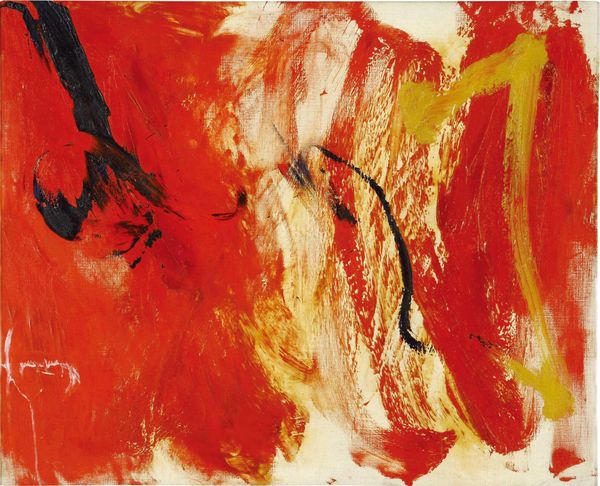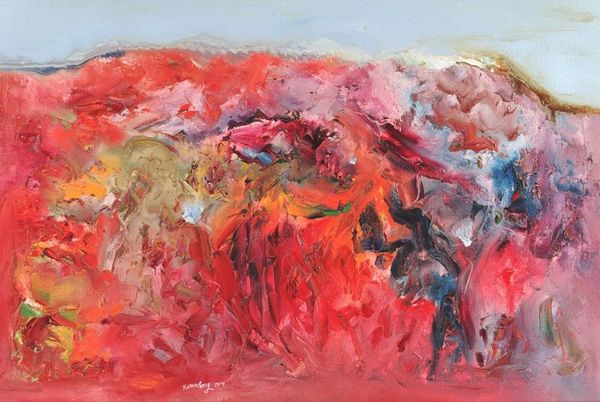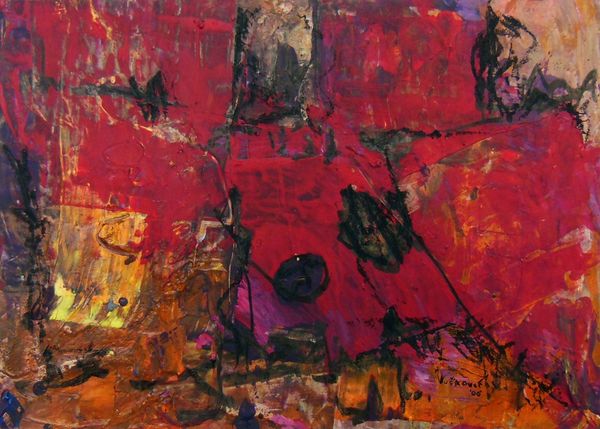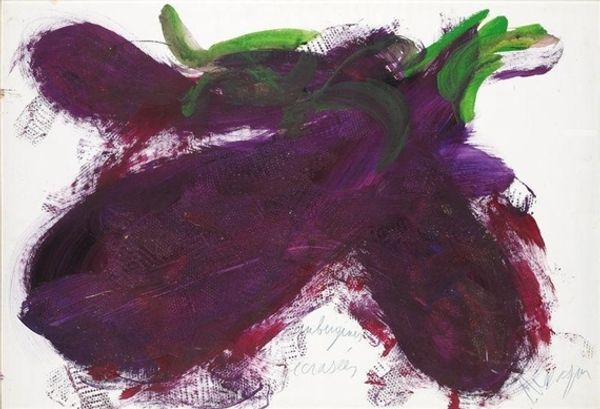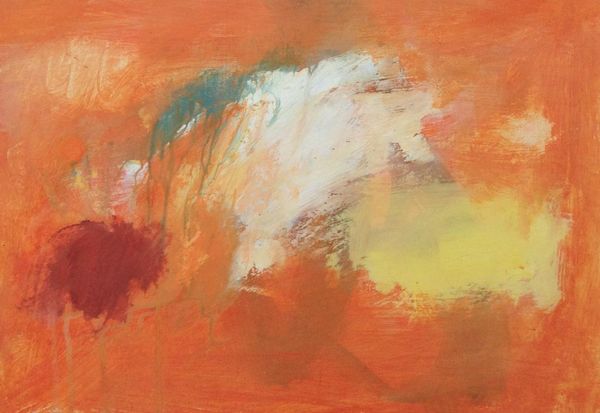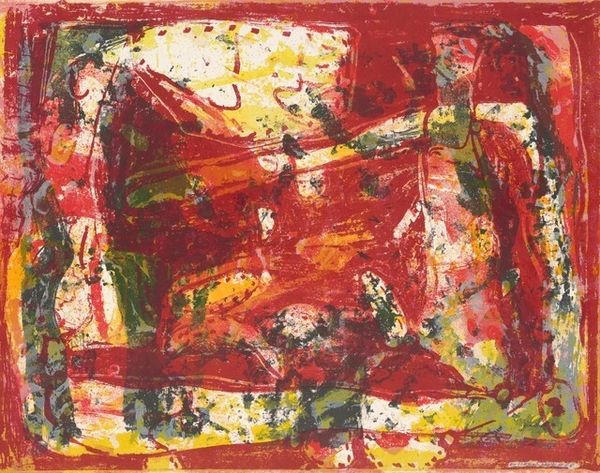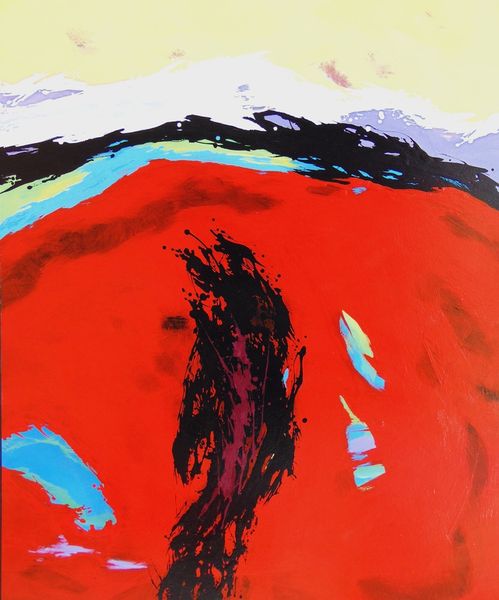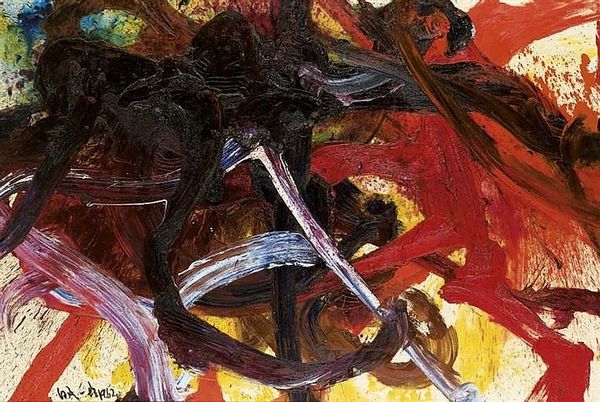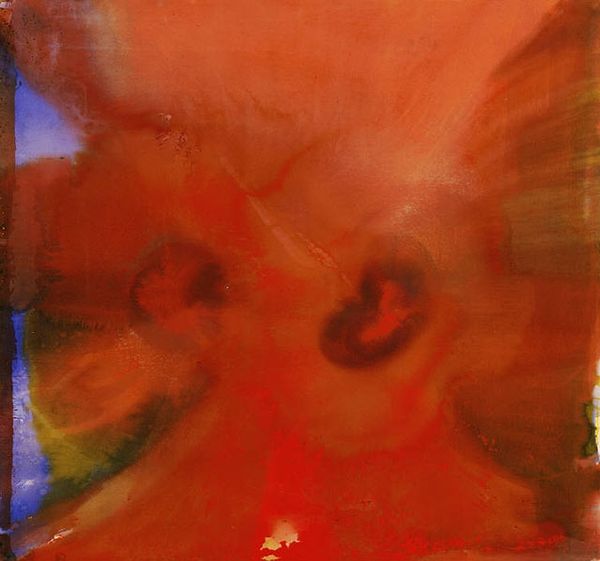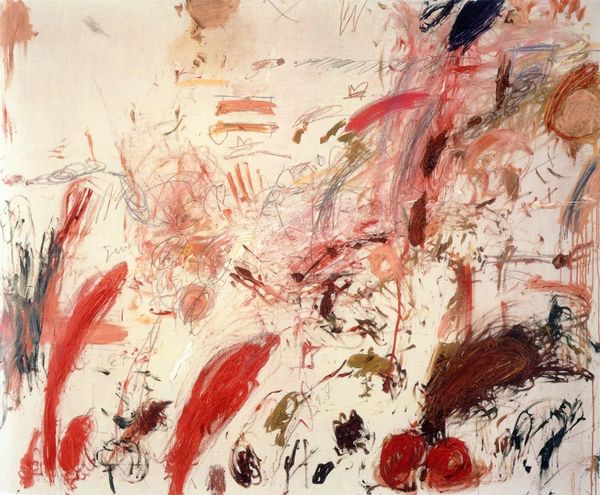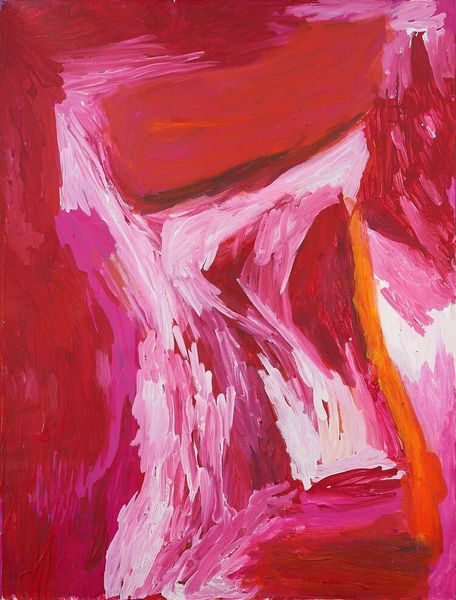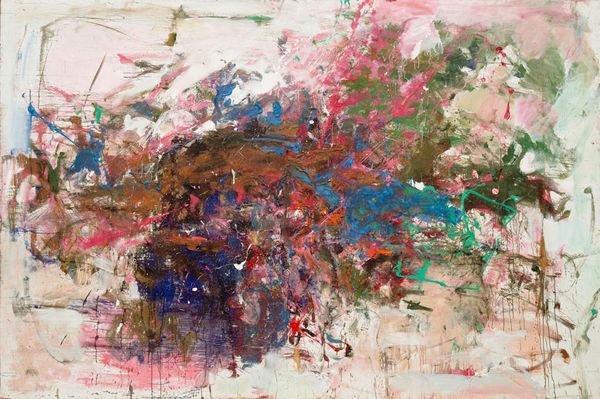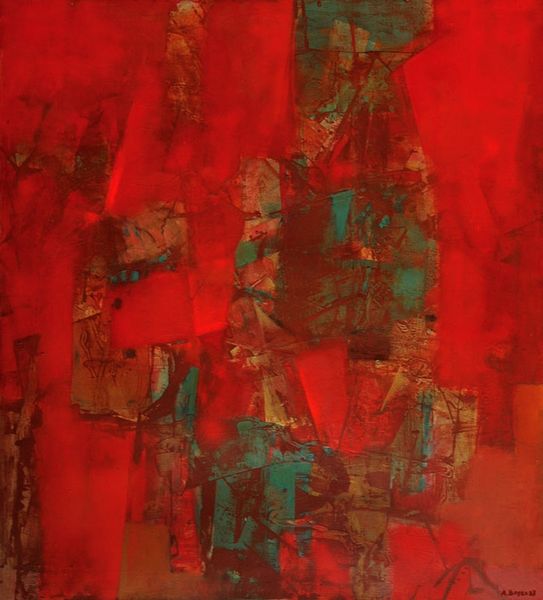
#
gutai
Copyright: Kazuo Shiraga,Fair Use
Curator: Here we have Kazuo Shiraga’s “Kaibun,” a dynamic painting rendered in acrylic on canvas in 1991. Editor: The sheer force of that red almost takes your breath away. It’s such a raw and visceral use of impasto! You can almost feel the movement he made while painting. Curator: Indeed. Shiraga was a key member of the Gutai Art Association, and "Kaibun" exemplifies their radical approach to art-making. The Gutai artists sought to break away from traditional methods and explore materiality through action. Editor: This intense color and vigorous application feel so central to the narrative around abstract expressionism. How were Gutai artists such as Shiraga perceived in relation to American counterparts at the time? Curator: Well, art historians have often drawn parallels between Gutai and Abstract Expressionism. Gutai foregrounded performative gestures in their practice; where some other art historians read this moment in art through the lens of post-war trauma and cultural reconstruction. Editor: So you see the painting's aggressive texture and the dominance of the color red as related to Japan’s socio-political landscape in the aftermath of WWII? The color certainly feels laden with heavy, unresolved emotion. Curator: Exactly. Shiraga was deeply interested in pushing the limits of painting. He actively sought to deconstruct traditional pictorial space with the belief that materiality and the act of creation are inextricably intertwined with cultural and emotional climates. Editor: It’s remarkable how the texture itself becomes a language. "Kaibun" speaks not just through color and form, but through the very physical presence of the paint. The heavy layering contributes a feeling of density. Curator: Ultimately, "Kaibun" invites us to consider painting as an event. The visual vocabulary is stripped bare, revealing the elemental forces behind artistic expression. Editor: Absolutely. It leaves me pondering about the artist's intention and how the cultural context informs how we experience a painting’s formal qualities.
Comments
No comments
Be the first to comment and join the conversation on the ultimate creative platform.

